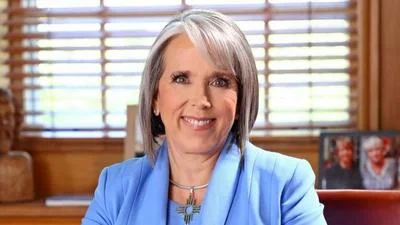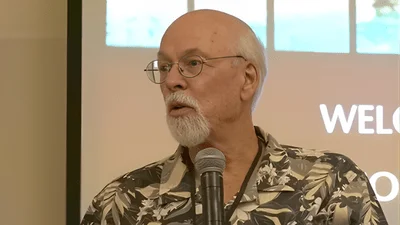Lakshmi Reddi Interim Provost and Chief Academic Officer | nmsu.edu
Manny Canas earned a bachelor’s degree in astrophysics before choosing New Mexico State University (NMSU) in 2019 to pursue a master’s degree. Guided by NMSU astronomy associate professor Wladimir Lyra, Canas collaborated on Lyra’s 2022 NASA Emerging Worlds grant before earning his master’s in 2023.
“Manny absorbed everything like a sponge,” Lyra said. “It was a mentor-apprentice experience.”
After receiving his master’s, Canas launched a full-time tech career with Booz Allen Hamilton as a software engineer. He builds both the user interface and the server-side interactions of the software. The company has contracts with many government agencies from the IRS to NASA.
“My main focus is software development,” Canas said. “But I'd love to branch off sometime and go full circle and come back to astronomy. Picking up a contract with NASA would be phenomenal.”
Canas is originally from Colombia but grew up in South Carolina. Both his parents have college degrees. After earning a bachelor’s degree in astrophysics, Canas joined Lyra’s first cohort of graduate students at NMSU.
Canas collaborated with Lyra on his NASA-Emerging Worlds grant to research and implement new ideas about planet formation to explain objects in the so-called Kuiper Belt, the region of the solar system beyond Neptune, where Pluto lies. The idea was to explain the origin of Pluto and other Kuiper belt objects. The professor and graduate student worked on two publications together.
“The first one was a major update on the theory of planetary growth by accretion of small solids, which goes by the name of ‘pebble accretion,’” Lyra said. “The second paper applied this update to develop a theory to calculate the mass and densities of objects in the Kuiper Belt and to explain the composition of those objects.”
“The research was really exciting,” Canas said. “Previously, all the pebble accretion models that were run have been on a single type of pebble. But we did a ‘polydisperse’ pebble accretion model, meaning you can have pebbles of different sizes and different densities and see how that affects the accretion rates onto planetesimals. To use our model to explain this density trend discovered in the Kuiper Belt was pretty astounding.”
From research and implementation of theories about planet formation to finding a career in technology, Canas credits his success to the Department of Astronomy and hands-on research opportunities with Lyra that equipped him with skills applicable across many fields.
“Having a degree in astronomy, especially with knowledge in computational astrophysics, I was able to tell potential employers that I ran shell scripts on supercomputers using SSH and analyzed gigabytes of data,” Canas said.
In mentoring students for successful careers, Lyra prepares his students by having frank conversations.
“I try to see where the student wants to go and tailor their educational experience toward that,” Lyra said. “Some students want to become faculty; they want to follow an academic path. Other students want industry roles. Depending on what a student wants, we can tailor mentorship accordingly.”
Canas wasn’t certain exactly what he wanted initially but saw astronomy as an opportunity under Lyra's guidance.
“The field was technically computational astrophysics,” Canas said. “So there is definitely programming involved—analyzing data, running simulations, making visualizations from received data.”
Lyra will continue researching with new graduate students while including undergraduates in these experiences.
“People think astronomy is just ‘looking at the sky.’ They’re not wrong but modern technology plays a significant role," Lyra said."Our ultimate goal is understanding how the universe works—a multidisciplinary process requiring diverse tools."
Lyra suggested as many as 90% of his astronomy grad school colleagues are now in tech sectors—a figure representative of broader trends within astronomy graduates' career paths.
As Canas pursues new avenues outside astronomy, he aims for management roles at Booz Allen Hamilton while exploring various fields further.
Canas is also training as a mentor through Develop Carolina program in his home state.
“I had help from my mentor; now I'm training to mentor someone joining our developer cohort,” Canas said.“I enjoy it immensely and aim for improvement.”
Lyra emphasized NMSU's broad job pipeline for its graduates across diverse careers.
“We're not only producing academics but building major components for national STEM workforce," he noted."Graduates secure roles at NASA, tech sectors or national labs—learning valuable problem-solving skills unique even within industries."
“I like R&D sector challenges," concluded Canas."I thrive stepping out comfort zones—I intend growing further within my current field.”
-30-
CUTLINE: Manuel Canas graduated from New Mexico State University spring 2023 master's degree now working software engineer Booz Allen Hamilton contracts government agencies IRS NASA.(Photo Justin Irick).
CUTLINE: Wladimir Lyra New Mexico State University associate professor works closely graduate students helping build nation's STEM network.(NMSU photo Josh Bachman).








